
24/7 Wall St. Insights
- Nationwide, the cost of living tends to be higher in cities than in places outside of major metro areas
- Still, consumer prices can vary considerably from one city to another, and some Arizona metro areas are more affordable for a broader range of incomes than others
- Also: 2 Dividend Legends To Hold Forever
The cost of living has skyrocketed across the United States in recent years — and rising prices are weighing heavily on the minds and pocketbooks of American families. According to a recent survey conducted by the U.S. Census Bureau, more than 57% of American households have had at least some difficulty affording their usual expenses in the last week, and over 93% of American adults reported stress related to higher prices in the last two months.
The rate of inflation began to surge in early 2021, and ultimately peaked in June 2022, when the price of goods and services were 9.1% higher than they were 12 months earlier, according to the Consumer Price Index. While inflation has cooled in the last two years, the CPI remains above the Federal Reserve’s target rate of 2%.
While no one was spared from rising consumer prices, in relative terms, the overall cost of living varies considerably across the country. In Arizona, for example, goods and services were about 0.1% less expensive, on average, than they were nationwide in 2022, the latest year of available data. Despite a slightly lower cost of living, 56.2% of Arizona households had difficulty paying for household expenses in the last week, and 93.0% of adults in the state reported stress resulting from rising prices. (Here is a look at the most expensive states to live in.)
Generally, Americans living in major cities are saddled with a higher cost of living than those in smaller, rural communities. According to the Bureau of Economic Analysis, goods and services are about 11.4% more expensive within U.S. metro areas than they are outside of metro areas.
In keeping with this pattern, goods and services are about 0.7% more expensive than average across all seven Arizona metro areas, and 19.7% less expensive in non-metro areas. Still, the overall cost of living can vary meaningfully between one Arizona city and another. In the state’s least expensive metro area, consumer prices are about 13.9% lower than they are nationwide on average. Meanwhile, in the state’s most expensive city, prices are about 3.7% higher than average. (Here is a look at the most affordable town in every state.)
Consumer prices tend to rise when demand for goods and services outpaces supply. Because cost of living is closely tied to consumer spending, it is no coincidence that more affluent areas are typically more expensive places to live than lower income communities. Not surprisingly, Arizona’s wealthiest metro area is also its most expensive metro area to live in.
This is the cost of living in every Arizona metro area, ranked.
Why It Matters
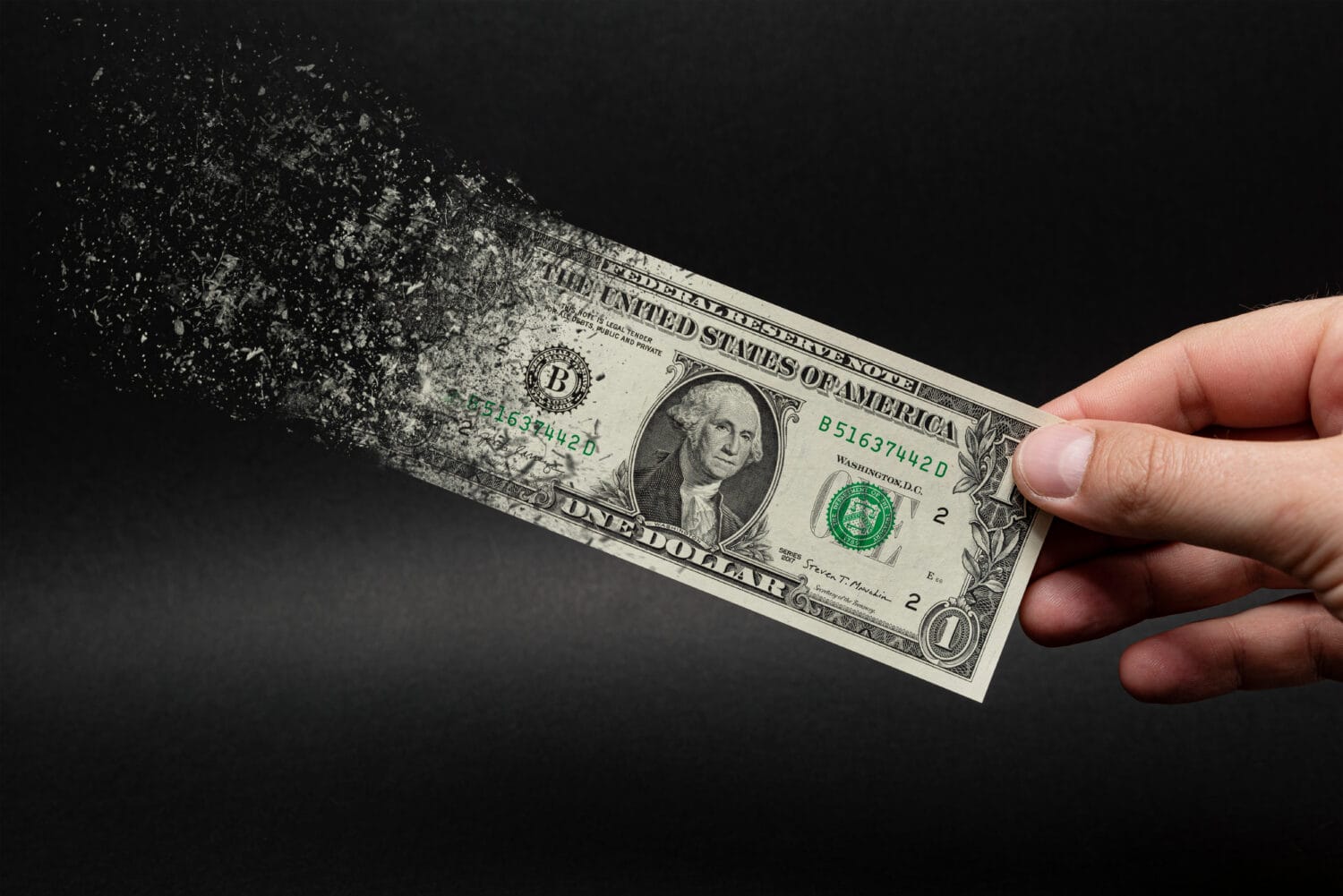
Inflation, as measured by the Consumer Price Index, hit a multi-decade high in 2022, and as of July 2024, the CPI remains well above the Federal Reserve’s 2% target. Even though prices tend to be far higher in cities than in rural communities, the vast majority of Americans — 80% according to the U.S. Census Bureau — live in an urban area. Still, consumer prices can vary considerably from one city to another, and some Arizona metro areas are more affordable for a broader range of incomes than others.
7. Yuma, AZ

- Overall cost of living, 2022: 13.9% lower than U.S. average
- Median household income, 2022: $53,994 ($20,574 less than statewide median)
- Median home value, 2022: $250,400 ($152,400 less than statewide median)
- Metro area population: 207,842
6. Sierra Vista-Douglas, AZ

- Overall cost of living, 2022: 11.8% lower than U.S. average
- Median household income, 2022: $55,031 ($19,537 less than statewide median)
- Median home value, 2022: $212,900 ($189,900 less than statewide median)
- Metro area population: 125,663
5. Prescott Valley-Prescott, AZ
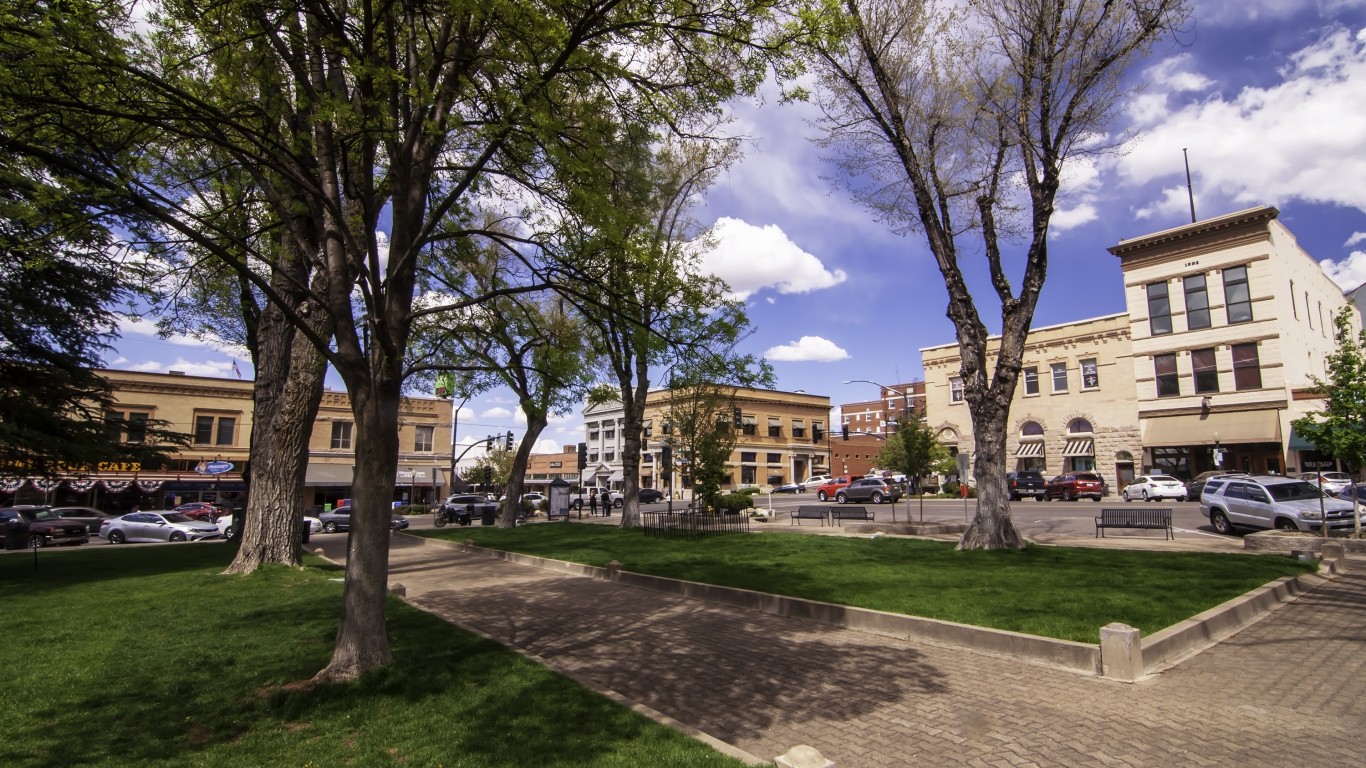
- Overall cost of living, 2022: 7.3% lower than U.S. average
- Median household income, 2022: $63,936 ($10,632 less than statewide median)
- Median home value, 2022: $434,700 ($31,900 more than statewide median)
- Metro area population: 246,191
4. Lake Havasu City-Kingman, AZ
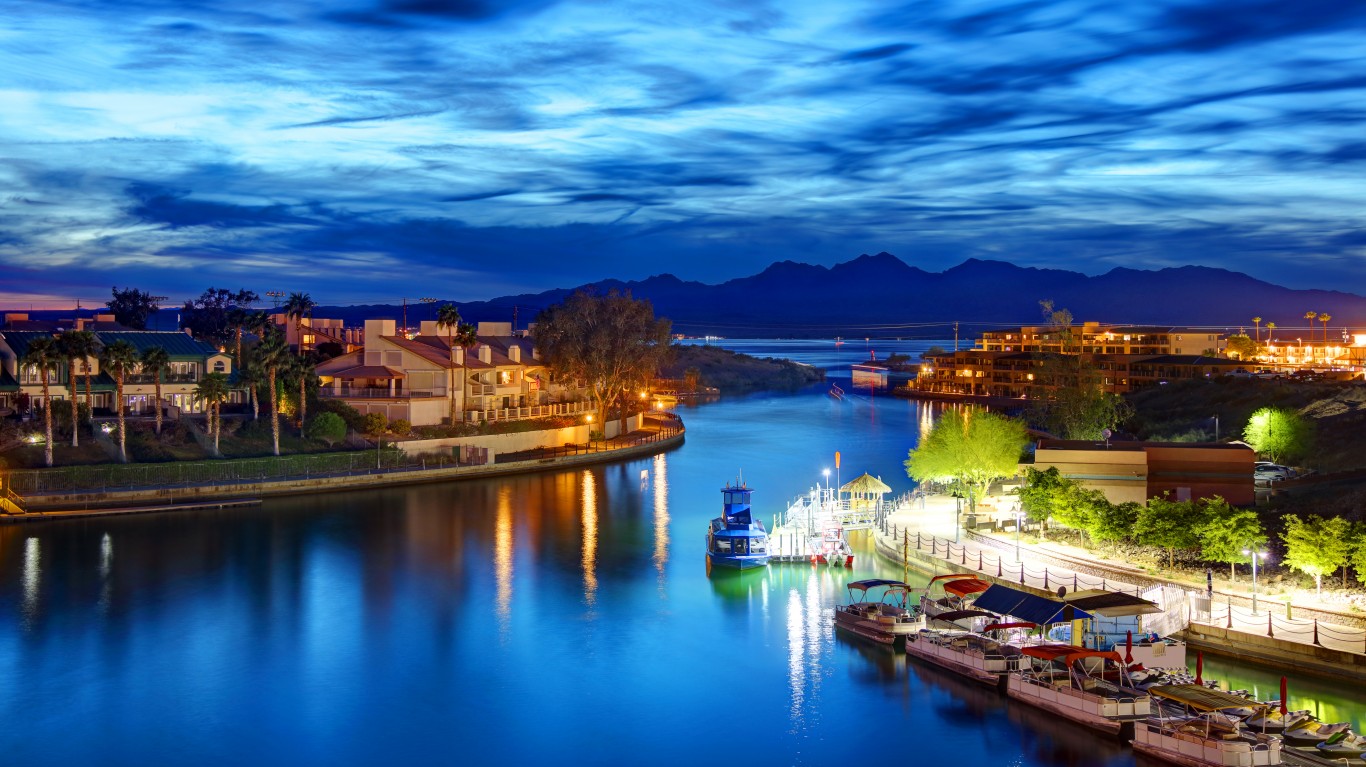
- Overall cost of living, 2022: 7.2% lower than U.S. average
- Median household income, 2022: $54,786 ($19,782 less than statewide median)
- Median home value, 2022: $290,800 ($112,000 less than statewide median)
- Metro area population: 220,816
3. Tucson, AZ
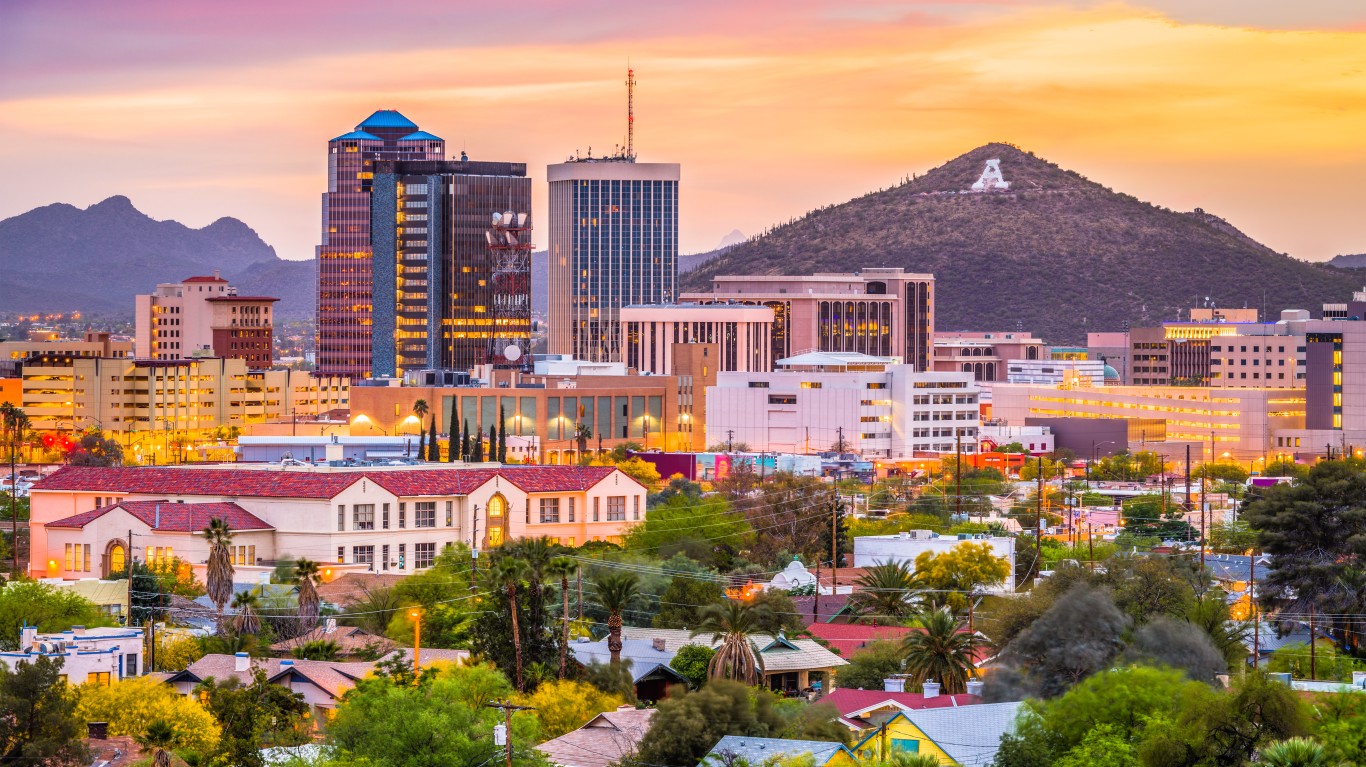
- Overall cost of living, 2022: 6.2% lower than U.S. average
- Median household income, 2022: $64,014 ($10,554 less than statewide median)
- Median home value, 2022: $317,000 ($85,800 less than statewide median)
- Metro area population: 1,057,597
2. Flagstaff, AZ

- Overall cost of living, 2022: 4.5% lower than U.S. average
- Median household income, 2022: $62,622 ($11,946 less than statewide median)
- Median home value, 2022: $459,300 ($56,500 more than statewide median)
- Metro area population: 144,060
1. Phoenix-Mesa-Chandler, AZ
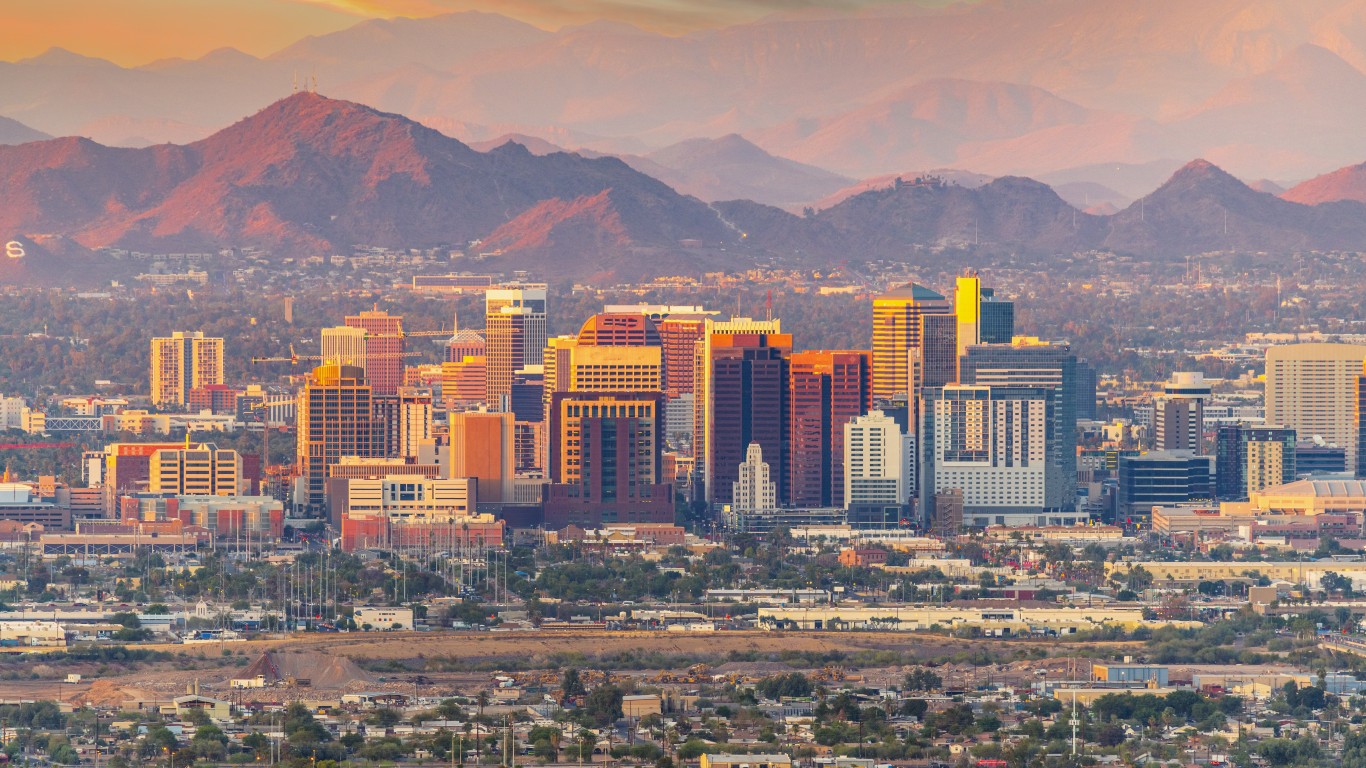
- Overall cost of living, 2022: 3.7% higher than U.S. average
- Median household income, 2022: $82,884 ($8,316 more than statewide median)
- Median home value, 2022: $454,000 ($51,200 more than statewide median)
- Metro area population: 5,015,678
In 20 Years, I Haven’t Seen A Cash Back Card This Good
After two decades of reviewing financial products I haven’t seen anything like this. Credit card companies are at war, handing out free rewards and benefits to win the best customers.
A good cash back card can be worth thousands of dollars a year in free money, not to mention other perks like travel, insurance, and access to fancy lounges.
Our top pick today pays up to 5% cash back, a $200 bonus on top, and $0 annual fee. Click here to apply before they stop offering rewards this generous.
Flywheel Publishing has partnered with CardRatings for our coverage of credit card products. Flywheel Publishing and CardRatings may receive a commission from card issuers.
Thank you for reading! Have some feedback for us?
Contact the 24/7 Wall St. editorial team.


